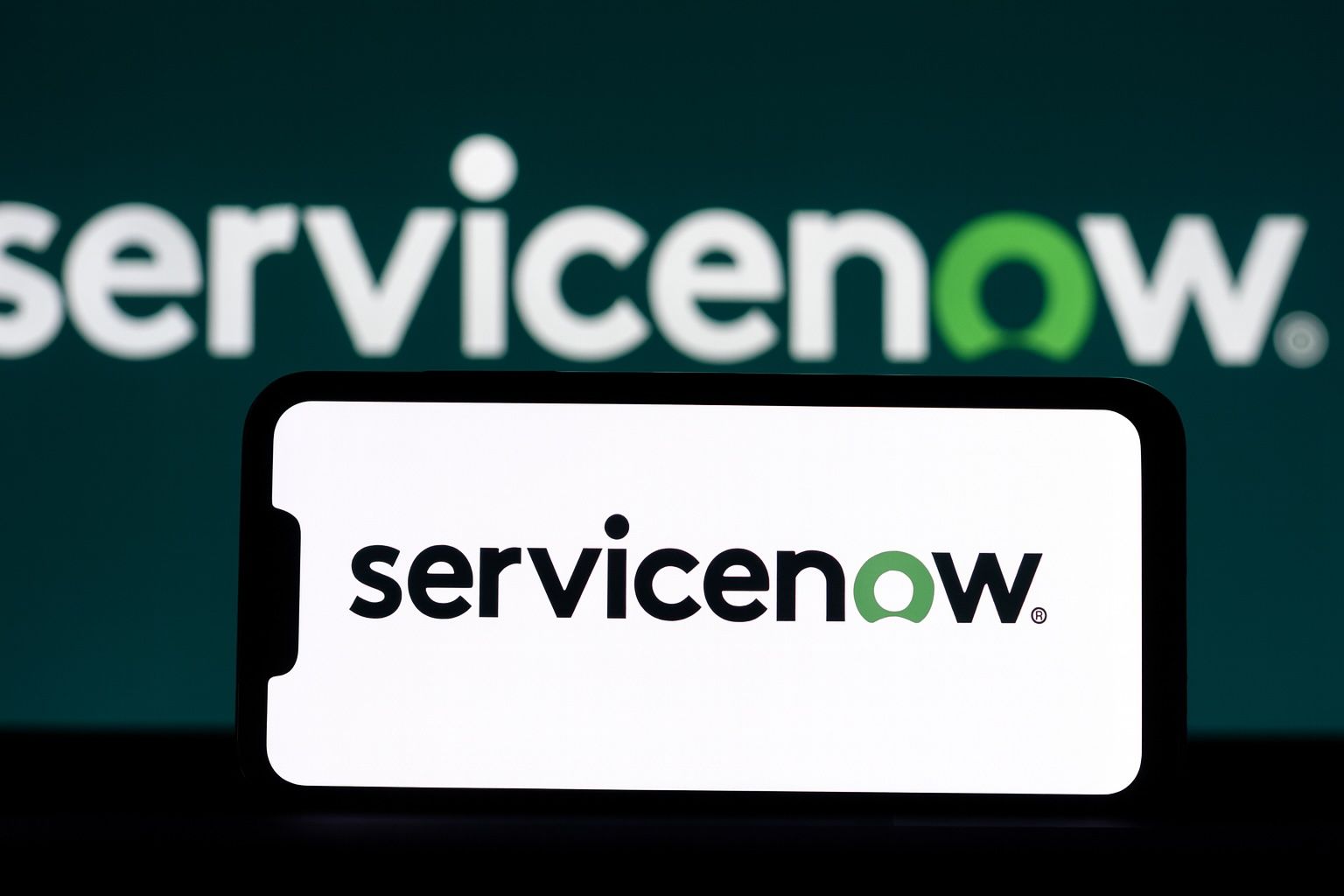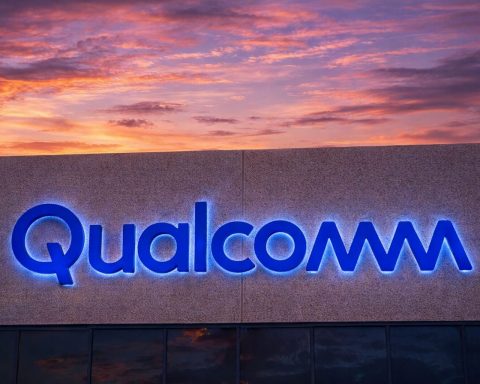What to Know Before Markets Open on October 20, 2025
- Latest Price & Performance: ServiceNow (NYSE: NOW) stock is hovering around $900-$905 per share after a modest uptick this week, though it remains down roughly 14% year-to-date and about 20% below its 52-week high of $1,170 [1] [2]. The enterprise software provider’s shares have lagged broader tech peers (many of which are up for the year) amid investor jitters about federal IT spending and the fast-evolving AI landscape [3].
- AI Momentum & Partnerships: The company’s aggressive push into artificial intelligence is in full swing. Last month, ServiceNow rolled out its new “Zurich” AI platform update, adding enhanced security, natural-language developer tools, and autonomous AI agent capabilities to its workflow software [4]. At the same time, ServiceNow struck major deals – from a landmark U.S. government project to modernize federal systems (dubbed “OneGov”) to strategic partnerships with NVIDIA and Genesys – underscoring its ambition to embed AI across industries [5]. Even Ferrari’s racing team has tapped ServiceNow as its official workflow partner, highlighting the platform’s expanding reach.
- Analysts Bullish Into Earnings:Wall Street is mostly optimistic. Over 40 analysts cover NOW, with an average 12-month price target around $1,100 (implying ~15–20% upside) [6]. Morgan Stanley recently upgraded the stock to “Overweight” with a $1,250 target, citing ServiceNow’s “consistent execution” and well-positioned AI roadmap [7]. Other firms echo that optimism – Oppenheimer reiterated an $1,150 target and Stifel sees $1,200 [8] – reflecting expectations that new AI offerings will boost growth.
- Valuation Debate: Not everyone is cheering, however. Some experts caution that ServiceNow’s valuation looks rich, as the stock trades above 100× earnings, far higher than industry averages [9]. A few analysts are skeptical: Guggenheim, for instance, slashed its target to $640 on worries that enterprise AI adoption might be slower than hoped [10]. Still, the broader consensus is overwhelmingly positive, with 41 “Buy” ratings vs. just 1 “Sell”, and many see the recent share pullback as a chance to buy a high-quality growth name at a discount [11] [12].
- Investor Sentiment & Outlook:Investor confidence in ServiceNow remains strong overall – major institutions hold about 87% of the company’s shares [13] – but there are mixed signals. On one hand, funds like Northeast Investment Management boosted their stakes recently [14], and CEO Bill McDermott is unequivocally bullish, declaring that “every business process in every industry is being refactored for agentic AI” and positioning ServiceNow as a uniquely differentiated platform for the AI era [15]. On the other hand, some insiders took profits: McDermott sold roughly $5.3 million worth of stock in late August (nearly half his holdings) [16], a move that can sometimes give investors pause. Overall sentiment on tech forums and social media is upbeat about ServiceNow’s AI leadership and steady growth, though there’s acknowledgment that the high stock price leaves little room for hiccups. All eyes are now on the upcoming Q3 earnings report due October 29 [17]. Investors will be watching to see if ServiceNow can sustain ~20% revenue growth (Q2 subscription sales jumped 22.5% YoY) and whether its AI initiatives start translating into even stronger results. Any new guidance or commentary on AI demand could sway the stock’s next move – validating the bulls’ lofty targets or vindicating the valuation skeptics – as ServiceNow’s growth story enters its next chapter.
Stock Performance and Recent Trends
ServiceNow’s stock has been choppy in 2025, navigating both tech sector swings and company-specific news. Shares closed this past week around $904 and have declined roughly 14% since January, underperforming many large-cap software peers [18]. The stock is still about 20% below its peak of $1,170 set in early 2025 [19], reflecting a cooldown after several years of torrid gains. By comparison, the broader S&P tech sector is up modestly on the year, so ServiceNow’s softer performance stands out – often attributed to investor nerves around its federal government business (amid budget uncertainties) and questions about how generative AI might disrupt traditional software models [20].
Encouragingly, there have been glimmers of momentum in recent weeks. The stock notched a 1–2% gain last week [21] and even spiked nearly 4% in a single day earlier this month after partners announced new AI-driven products on ServiceNow’s platform, amid a broader market rally [22] [23]. (On that day, shares closed at about $924, up 3.9%.) Such pops suggest that positive news – whether a big customer win or upbeat tech headlines – can still catalyze investor enthusiasm for NOW. At around a $900 share price, ServiceNow commands roughly a $190 billion market cap, making it one of the world’s most valuable software companies. Many holders are now looking ahead to the company’s quarterly earnings report at the end of October for the next directional cue.
AI Innovations Fueling Growth Narrative
ServiceNow has bet big on artificial intelligence, and 2025 has marked an inflection point in its AI strategy. In September, the company unveiled its “Zurich” platform release, a major update designed to weave AI deeper into its workflow offerings. Zurich introduces a host of new capabilities – from enterprise-grade AI security features to intuitive natural language tools for developers, plus support for “autonomous agents” (ServiceNow’s term for AI bots that can act across its platform) [24]. In simple terms, this update aims to make the Now Platform smarter and more user-friendly: think IT workflows that resolve issues automatically and apps that anyone can build by just describing what they need in plain English. Around the same time, ServiceNow also rolled out a new “AI Experience” interface – a conversational hub using voice, text, and image inputs to help employees interact with AI in their daily work [25]. These innovations underscore CEO Bill McDermott’s focus on keeping ServiceNow at the forefront of the AI revolution in enterprise software.
Beyond its own product upgrades, ServiceNow is plugging into the wider AI ecosystem through high-profile partnerships. A notable example is the company’s alliance with NVIDIA to develop next-generation AI solutions – a partnership that leverages NVIDIA’s leadership in AI chips with ServiceNow’s workflow software to create powerful AI copilots for businesses [26]. In the customer experience arena, ServiceNow committed up to $750 million to invest in Genesys, a leader in AI-powered customer service technology [27]. That sizable stake not only provides ServiceNow a financial interest in a key AI partner, but also tightly integrates Genesys’s contact-center data with ServiceNow’s platform (for example, to streamline customer support workflows).
ServiceNow is even making inroads in areas one might not expect. In a splashy marketing-tech deal, it became the official workflow partner for Ferrari’s Hypercar racing team [28] – showcasing how its platform can optimize operations in real-time, whether in an office or a pit lane. And importantly, the company is expanding its footprint in government. It inked a landmark “OneGov” agreement with the U.S. General Services Administration (GSA) to modernize federal agency workflows using ServiceNow’s AI tools [29]. This deal, announced in September, is aimed at an “AI-first” overhaul of government IT. Analysts estimate the Now Platform could boost government workflow efficiency by ~30% under this contract [30]. To sweeten the adoption, ServiceNow is offering public agencies steep discounts (up to 70% off) on upgrades to its AI-infused services, betting that easier access will drive broader use of its software in the federal realm [31]. Taken together, these partnerships and projects demonstrate how ServiceNow is embedding itself in critical sectors – from finance and healthcare to the public sector and even sports – as a go-to platform for AI-driven productivity.
Analyst Perspectives: Price Targets and Valuation
On Wall Street, ServiceNow is a tale of two narratives: one of strong growth and tech leadership that excites bulls, and another of high valuation that gives bears pause. The bullish camp currently has the upper hand. According to Directorstalk data, 41 out of 46 analysts covering ServiceNow rate it a “Buy”, with only 4 Holds and 1 Sell – an overwhelmingly positive skew [32]. The average price target is roughly $1,140 (around 25% above the latest price) [33], and many analysts have been reiterating or raising their targets in light of the company’s momentum. Morgan Stanley made headlines in late September by upgrading NOW to Overweight and boosting its target from $1,040 to $1,250 [34]. The Morgan Stanley team argued that investors were “missing the forest for the trees” – overly worried about generative AI “disruption” and government spending delays – while ServiceNow’s fundamentals remain rock-solid [35]. They noted the company’s consistent execution and projected it can sustain about 20% annual subscription revenue growth with over 20% free cash flow growth through 2027 [36]. In fact, ServiceNow’s trailing 12-month revenue is up ~22% year-on-year [37], a growth rate that few large-cap software firms can match, lending credence to the bullish outlook.
Other analysts are similarly enthusiastic: Oppenheimer recently reaffirmed its $1,150 target (Outperform rating) after channel checks with a major ServiceNow partner, and Stifel kept a Buy rating with a $1,200 target, noting improvements in enterprise IT spending trends [38]. The broad takeaway from the bulls is that ServiceNow is leading the pack in the shift to AI-powered workflows, and that its entrenched position in big companies (the platform is used by over 85% of Fortune 500 firms [39]) will translate into years of steady, double-digit growth. With that in mind, many on Wall Street see the stock’s recent dip from its highs as an opportunity rather than a red flag – a chance to accumulate shares of a premier software franchise before the market fully prices in its AI potential [40].
However, it’s impossible to talk about ServiceNow without addressing valuation. The company’s stock isn’t cheap by traditional metrics: it currently trades at well over 100 times earnings, dramatically above the software industry average (around 35×) and even above most high-growth peers (~60×) [41]. This lofty multiple means investors are effectively paying up for future growth – and it leaves the stock vulnerable if that growth falters. A few analysts have indeed taken a more cautious stance. Notably, Guggenheim’s analyst issued a Sell rating and slashed their price target to $640 (well below the current price) [42]. Guggenheim voiced concern that the hype around generative AI might be running ahead of actual adoption by customers, warning that ServiceNow could face slower AI-related sales uptake and even potential cuts to its revenue guidance if big clients take longer to implement AI projects [43]. Another skeptic, cited in European research, noted that ServiceNow’s profit margins, while strong, are similar to peers like Salesforce – yet ServiceNow’s market valuation is significantly higher, implying the stock might be priced for perfection.
These divergent views have yielded a wide range of targets on the stock. According to a recent Fintel report, current analyst price forecasts span from lows around $740 to highs as high as $1,365 over the next year [44]. Such a spread is unusually large for a blue-chip company, highlighting how much debate exists around ServiceNow’s trajectory. Still, the consensus remains that growth prospects outweigh the risks: as mentioned, the consensus recommendation is firmly bullish, and many institutional investors appear comfortable with the valuation given ServiceNow’s track record. “ServiceNow has never been more differentiated as a full‑stack AI platform for the enterprise,” CEO McDermott insists [45] – and by and large, the analyst community seems to agree that the company’s innovation and execution justify a premium price tag, as long as it keeps delivering.
Investor Sentiment and What’s Next
Among investors, there is a palpable buzz around ServiceNow – albeit a more sober kind of excitement than the meme-stock frenzy that some high-flying tech names have seen. ServiceNow doesn’t dominate Reddit boards or TikTok chatter, but it does enjoy a strong reputation in the investment community as a “stalwart” enterprise software play riding the AI wave. Institutional investors in particular have been doubling down. In the second quarter, for example, Northeast Investment Management raised its stake in NOW by 5%, bringing its holdings to ~$28.6 million [46]. Big-name backers like Goldman Sachs and Norway’s sovereign wealth fund also boosted their positions earlier this year [47] – a sign that “smart money” sees long-term value. In fact, roughly 87% of ServiceNow’s shares are owned by institutions [48], indicating broad confidence among professional investors in the company’s future. This high level of institutional ownership can provide some stability (as these investors are less prone to panic selling) but also means the stock’s story is well understood by the market.
On the other side of the coin, insider activity has raised some eyebrows. During the summer, several ServiceNow executives sold shares – most prominently CEO Bill McDermott, who sold about 5,825 shares in late August for over $5.3 million [49]. That sale amounted to nearly half of his personal stake in the company. Not long before, ServiceNow’s General Counsel and other insiders also sold portions of their stock holdings [50]. While insiders sell for many reasons (often for diversification or personal financial planning), such moves invariably prompt questions about whether management might perceive the stock as fully valued. So far, investors haven’t overreacted to these sales – the stock didn’t see any sharp drop when they were disclosed – but it’s something the market is mindful of. The company’s strong fundamentals and continued insider ownership (McDermott still holds thousands of shares) have helped assure investors that these were routine trades rather than red flags.
Looking ahead, the next big catalyst for ServiceNow will be its Q3 2025 earnings announcement on October 29th [51]. Expectations are running high. In the last reported quarter (Q2), ServiceNow delivered a “beat-and-raise” performance – subscription revenues jumped 22.5% year-over-year to $3.11 billion [52], topping forecasts and prompting management to lift its full-year outlook. Investors will be watching closely to see if that ~20% growth pace has held up through Q3. Equally important will be any commentary on the uptake of new AI products and major deals like the GSA contract. Is the hype translating into tangible bookings and expansions? Or are clients taking a cautious, longer-term approach to AI investments? Recent analyst checks have offered mixed signals: UBS noted this week that its channel surveys found ServiceNow’s core business remains “solid” (pointing to a likely earnings beat), but some customer feedback on AI adoption was “somewhat disappointing” – a trend echoed across many software firms venturing into AI [53]. In other words, companies are interested in AI, but rolling out enterprise AI at scale is a gradual process.
For ServiceNow shareholders, a lot is riding on how management navigates this narrative. The company’s guidance and tone on the earnings call could sway sentiment significantly. If CEO McDermott and his team report robust growth and express confidence that the AI-focused initiatives (like Zurich and AI Experience) are driving real demand, it could re-energize the stock and push it closer to those $1,100+ price targets analysts have set. Positive surprises – such as new big customer wins or an upside revision to the outlook – would likely be met with cheers from the market. Conversely, if results or forecasts come in softer than expected, or if the company acknowledges any slowdown in IT spending, the stock could see renewed pressure given its valuation. Some traders recall that in September, a single bearish call (Guggenheim’s downgrade) helped send NOW down nearly 3% in a week [54], showing how sensitive it can be to sentiment shifts.
Bottom line: ServiceNow enters its earnings report as a company at the crossroads of high promise and high expectations. Public investors – from Reddit commentators to pension fund managers – will be scrutinizing whether the firm can keep up its impressive growth and make its ambitious AI bets pay off. With a dominant position in workflow automation, a slew of new AI capabilities, and bullish analysts in its corner, ServiceNow has a strong hand. Now it’s about executing and convincing the market that even at $900 a share, there’s still plenty of upside “now” and in the future. [55] [56]
Sources: ServiceNow press releases and earnings updates; ts2.tech analysis of ServiceNow’s 2025 AI strategy [57] [58]; Simply Wall St stock valuation review [59]; Investing.com market news on analyst calls (UBS, Morgan Stanley, etc.) [60] [61]; MarketBeat and Directorstalk analyst rating summaries [62] [63]; AInvest and TradingView (“StockStory”) commentary on recent stock moves and investor sentiment [64] [65].
References
1. simplywall.st, 2. www.tradingview.com, 3. ts2.tech, 4. ts2.tech, 5. ts2.tech, 6. ts2.tech, 7. ts2.tech, 8. www.investing.com, 9. simplywall.st, 10. www.ainvest.com, 11. www.directorstalkinterviews.com, 12. ts2.tech, 13. www.marketbeat.com, 14. www.marketbeat.com, 15. ts2.tech, 16. www.marketbeat.com, 17. www.investing.com, 18. ts2.tech, 19. www.tradingview.com, 20. ts2.tech, 21. simplywall.st, 22. www.tradingview.com, 23. www.tradingview.com, 24. ts2.tech, 25. www.investing.com, 26. ts2.tech, 27. ts2.tech, 28. ts2.tech, 29. ts2.tech, 30. ts2.tech, 31. ts2.tech, 32. www.directorstalkinterviews.com, 33. www.directorstalkinterviews.com, 34. ts2.tech, 35. ts2.tech, 36. ts2.tech, 37. www.ainvest.com, 38. www.investing.com, 39. ts2.tech, 40. ts2.tech, 41. simplywall.st, 42. www.ainvest.com, 43. www.ainvest.com, 44. fintel.io, 45. ts2.tech, 46. www.marketbeat.com, 47. www.ainvest.com, 48. www.marketbeat.com, 49. www.marketbeat.com, 50. www.marketbeat.com, 51. www.investing.com, 52. ts2.tech, 53. www.investing.com, 54. www.ainvest.com, 55. ts2.tech, 56. www.investing.com, 57. ts2.tech, 58. ts2.tech, 59. simplywall.st, 60. www.investing.com, 61. www.investing.com, 62. www.directorstalkinterviews.com, 63. www.marketbeat.com, 64. www.ainvest.com, 65. www.tradingview.com







